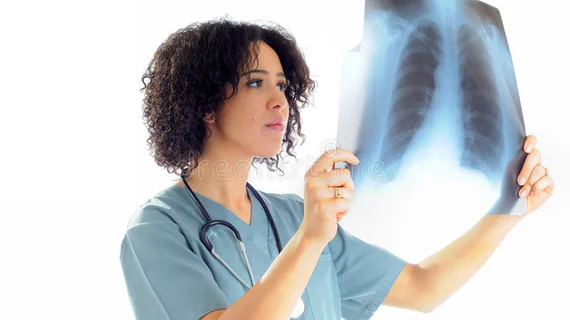Chest imaging in the ED has increased substantially over the last 20 years
A multi-institutional team of researchers found that emergency department (ED) utilization of chest imaging has grown substantially in the U.S. over the last two decades and is likely due to an increased availability of CT scanners and increased pressure on ED physicians to rapidly triage patients, according to a study published Jan. 2 in the Journal of the American College of Radiology.
Researchers led by Jonathan H. Chung, MD, associate professor of radiology at the University of Chicago Medical Center, also attributed the substantial growth to an increased frequency of ED visits and thoracic imaging per ED visits over the 20-year period.
To more accurately identify the frequency of chest imaging in Medicare beneficiaries in the ED, researchers analyzed Medicare Physician/Supplier Procedure Summary Master Files from 1994 to 2015. The team normalized the utilization of chest imaging to annual Medicare enrollment as well as annual ED visits. Additionally, they used individual Medicare beneficiary five percent research-identifiable files to perform similar determinations for each state, according to the researchers.
The researchers found that between 1994 and 2015, per 1,000 Medicare beneficiaries, ED utilization of chest radiography and CT increased by 173 percent and 5,942 percent, respectively. Per 1,000 ED visits, utilization increased by 81 percent, respectively.
Moreover, most states experienced an increase in the utilization of both radiography and CT, according to the researchers.
Although the increased utilization of CT chest imaging in the ED outweighed the increased utilization of radiography, the fact that both increased may suggest that the growth in CT examinations was not in place of radiography but rather in addition to it, the researchers noted.
Overall, the researchers explained that the higher rate of growth of chest CT utilization may have been because of both the increased availability of CT scanners and an increased pressure on ED physicians to rapidly triage patients.
“Although the observed increase in chest imaging utilization is likely multifactorial, we believe our findings suggest that care in the ED has evolved to increasingly rely on imaging to guide patient management, more so than in the inpatient and outpatient settings, as particularly highlighted by the fact that chest imaging has increased on a per visit basis,” Chung et al wrote.

